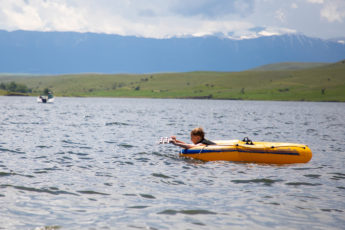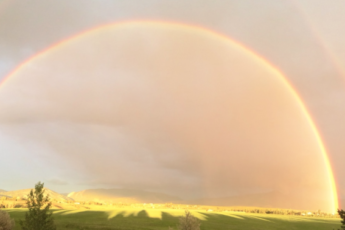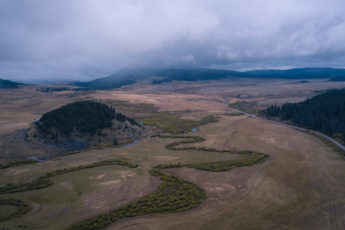Some Montana trails see clear travel ahead
It’s rare to find something that four out of five folks agree upon these days. But that is how many Montanans — 81 percent of us — recreate outside, whether we’re hunting, snowmobiling, fishing or picnicking.
When we’re out in the woods, how often do we think of the trails we’re using? Do we consider the hardworking crews that hike hundreds of miles each summer lugging saws and pulaskis into the backcountry to maintain our expansive trail system?
Those men and women work their tails off to clear downed trees, fix bridges, and keep our trails safe and passable. But they can only do so much, especially as crew sizes get smaller and smaller each year. The Forest Service’s recreation budget is constantly shrinking because of general cuts to the U.S. Department of Agriculture and because money is taken out to fight wildfires.
So, countless miles of trails go untouched each year, and many of our trails aren’t suited for people, stock, or motorized use.
The Forest Service is looking to change that. It’s picked 15 priority areas around the country to start addressing its huge, $300 million trail maintenance backlog. And three Montana areas made the list: The Bob Marshall Wilderness and adjacent lands, the Continental Divide Trail and the Central Idaho Wilderness Complex, which spreads into parts of western Montana, were all recognized as priority areas.
The Chinese Wall, a unique geological feature found deep in the Bob Marshall Wilderness.
“Our nation’s trails are a vital part of the American landscape and rural economies, and these priority areas are a major first step in USDA’s on-the-ground responsibility to make trails better and safer,” Agriculture Secretary Sonny Perdue announced last month.
I’m sure we can all name a trail or two or ten that we think need some work. So how did these three areas get chosen?
Perdue followed the criteria set by Congress back in 2016. In these three areas, the lack of trail maintenance has reduced the public’s access, led to unsafe conditions, and increased the potential harm to the surrounding plants, animals, land and waterways. Also, these areas, if they continue to be under-maintained, will only become more expensive to fix in the future.
Of course, fixing these backlogged trails is easier said than done. The Department of Agriculture has yet to explain exactly how they’ll attack this backlog or how they’ll pay for it. According to that same 2016 law, they have six months to figure that out.
But there are some good things in the works that could make funding these trail projects easier. There’s talk of changing the way that fighting wildfires is funded, which is great news for the Forest Service and for states like ours whose budgets are regularly ravaged in epic fire years.
And the Forest Service will be expected to partner with volunteers to get this work done.
Luckily for us, there are a lot of organizations and groups around the state that already volunteer their time to maintain our public trails. Backcountry Hunters and Anglers, as well as many hunting guides, clear hundreds of miles of Forest Service trails each year. The Prickly Pear Land Trust, the Southwest Montana Mountain Bike Association, and a handful of wilderness groups lead dozens of volunteer trail crews each summer. And the Montana Conservation Corps brings hundreds of Americorps volunteers to the state each summer to build and maintain trails on our public lands.
(Left) A volunteer trail crew with the Montana Wilderness Association works on a section of the Continental Divide Trail in the Pintlers. (Right) A Montana Conservation Corps crew hikes to their backcountry camp, which will be their home base for 7 days while they clear over twenty miles of trail.
Clearing downed trees in a burned area.
Those groups don’t even begin to account for the rogue citizens who take it upon themselves to clear and upkeep the trails in their backyards. In fact, many regional offices of the Forest Service even offer trainings each spring to teach proper crosscut and chainsaw techniques so that folks who volunteer on their own time can do it safely.
Of course, as to be expected, the exact details about how these volunteer partnerships will work is a little fuzzy. But one thing is certain: These organizations, as well as other local citizen-run groups, will continue to play a key role in maintaining our public lands going forward.
Because while the trails at the top of the Forest Service’s list are a great start, there are a lot more backlogged trails that need fixin’.
–Amanda Garant
Featured Photo: A volunteer trail crew with the Montana Wilderness Association builds a retaining wall on a washed-out section of the Continental Divide Trail that was previously impassable for stock.
Got something to say to Prairie Populist? Send news tips, story ideas and comments to [email protected]. If you have something to submit, or an idea for a story you’d like to write for us, check out our Submission Guidelines here.



